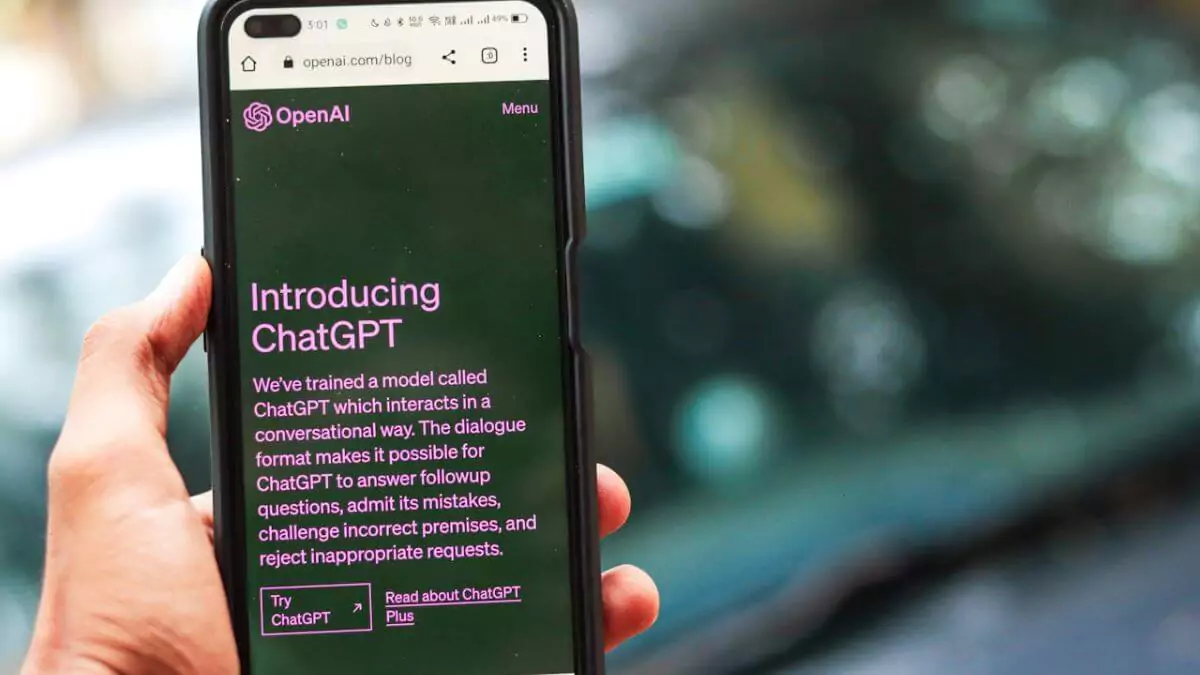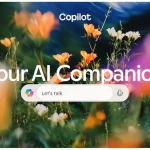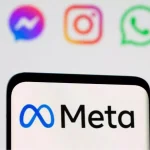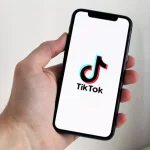April 5, 2025 – ChatGPT, developed by OpenAI, remains a cornerstone of the AI revolution, blending cutting-edge technology with practical applications. As of April 2025, ChatGPT boasts 400 million weekly active users and new features like task reminders and expanded image generation capabilities. This deep dive explores ChatGPT’s evolution, its 2025 updates, practical uses, ethical challenges, and its role in shaping the future of AI, offering a comprehensive resource for tech enthusiasts and professionals alike.
Understanding ChatGPT: The Basics
The Origins of ChatGPT
ChatGPT launched in November 2022, created by OpenAI, a research organization co-founded by Elon Musk and Sam Altman in 2015. Built on the GPT (Generative Pre-trained Transformer) architecture, ChatGPT was designed to understand and generate human-like text, making it a pioneer in conversational AI. It gained 1 million users in just five days, a feat that took Netflix over three years, as noted in a historical overview. By February 2025, ChatGPT reached 400 million weekly active users, doubling from 200 million in August 2024, and processes over 1 billion queries daily, according to a report on its growth. OpenAI’s revenue also reflects this growth, hitting $3.7 billion in 2024 and projecting $11 billion in 2025, per the same TechCrunch report.
How ChatGPT Functions
ChatGPT operates on OpenAI’s GPT-4o model as of 2025, a multimodal AI capable of handling text, images, and potentially other data types like video in the future. It uses machine learning to generate responses based on vast datasets, enabling it to answer questions, write content, code, and more. The integration of Anthropic’s Model Context Protocol (MCP) allows ChatGPT to connect with external tools like Google Drive and Slack, enhancing its ability to provide accurate, context-aware responses, as detailed in a summary of updates. Users interact with ChatGPT via text prompts, with premium features available through ChatGPT Plus ($20/month), Team, and Pro plans.
ChatGPT’s Features in 2025
Core Functionalities
ChatGPT’s versatility makes it a powerful tool across various domains:
- Conversational Tasks: Answering questions, drafting emails, and engaging in dialogue with a human-like tone.
- Creative Writing: Generating stories, poems, and scripts, often used by writers for brainstorming, as noted in a use case study.
- Coding Support: Writing and debugging code in languages like Python and JavaScript, with GPT-4o offering improved performance, per OpenAI’s release notes.
- Image Generation: Powered by DALL·E 3, ChatGPT can create images, now including public figures and controversial symbols, a policy shift in 2025, as highlighted in a discussion on policy changes.
2025 Updates and Enhancements
ChatGPT’s 2025 updates make it more practical and user-friendly:
- Task Reminders: A beta feature for Plus, Team, and Pro users allows scheduling reminders, such as passport expiration alerts, with push notifications, as detailed in the TechCrunch report.
- Custom Instructions: Users can assign traits like “Professional” or “Gen Z” and nicknames, though some reported glitches with options disappearing, per TechCrunch.
- Expanded Image Generation: ChatGPT now generates images of public figures and hateful symbols, a change driven by its viral Studio Ghibli-style generator, raising concerns about misuse, as noted in the Inkl article.
- Web Search Accessibility: ChatGPT offers web search capabilities without requiring a login, broadening its accessibility, per TechCrunch.
- Advanced Voice Mode: Premium users can use Advanced Voice Mode with screen-sharing and visual capabilities, enhancing real-time interaction, as reported in a ZDNet article.
Premium Features for Advanced Users
ChatGPT Plus, Team, and Pro users gain access to advanced models like GPT-4o, which excels in complex tasks like coding and data analysis. Features like “Browse with Bing” allow real-time web searches, while the GPT Store, launched in 2024, enables users to create and monetize custom GPTs for specific purposes, such as a “Legal Advisor” or “Fitness Coach,” per OpenAI’s release notes. The ability to continue generating messages beyond the token limit (with each continuation counting toward the allowance) adds flexibility for long-form content creation.
Applications of ChatGPT Across Industries
Everyday Uses for Individuals
ChatGPT serves a wide range of users:
- Students: Assisting with homework, research, and essay writing, though educators caution against over-reliance due to accuracy concerns, as noted in a Brandeis University report.
- Professionals: Automating tasks like drafting emails, creating presentations, and summarizing reports.
- Developers: Writing code, debugging, and generating documentation, with GPT-4o producing cleaner code, per OpenAI’s release notes.
- Creatives: Generating story ideas, designing artwork, and creating AI-powered podcasts, a premium feature introduced in 2024.
Business and Enterprise Applications
Businesses across industries leverage ChatGPT for efficiency:
- Customer Service: Automating responses to common queries, with 70% of firms anticipating AI to supercharge content creation, per a Master of Code report.
- Marketing: Generating ad copy, social media posts, and personalized customer experiences, with 58% of companies seeing AI as a gateway to personalization, per the same report.
- Hospitality: Hotels use ChatGPT for chatbots and virtual assistants, with 64% experimenting with AI to boost efficiency, as noted in the Master of Code report.
- Enterprise Integration: OpenAI’s adoption of MCP enables ChatGPT to integrate with tools like Google Drive and Slack, streamlining workflows, as highlighted in a TechCrunch MCP report.
In the U.S., where 65% of professionals use AI daily (2024 Gartner survey), ChatGPT’s impact is significant, particularly in tech hubs like San Francisco and Seattle, where businesses adopt AI to stay competitive.
Ethical Challenges and Concerns
Misinformation and Bias
ChatGPT’s tendency to “hallucinate”—generating plausible but incorrect answers—poses a risk, as explained in a Wikipedia entry. It can perpetuate biases from its training data, potentially spreading misinformation, especially with relaxed image generation rules, as discussed in a report on AI ethics. OpenAI mitigates this by flagging potentially false outputs, but the risk remains, particularly on divisive topics like politics or health.
Privacy and Data Security
Privacy concerns have been a recurring issue for ChatGPT. A 2023 bug exposed users’ chat titles, raising questions about data security, as noted in the Wikipedia entry. OpenAI’s privacy policy allows the company to use data fed into ChatGPT for training, which concerns educators and users, as highlighted in the Brandeis report. Best practices include avoiding sharing sensitive information and using the “chat history off” feature, which prevents conversations from being used for training, per OpenAI’s release notes.
Environmental Footprint
ChatGPT’s environmental impact is substantial. It consumes 0.3 watt-hours per query and 0.5 liters of water per prompt series for server cooling, per Epoch AI, as reported in a study on AI’s environmental impact. With over 1 billion daily queries, this adds up, prompting calls for more sustainable AI practices, such as using renewable energy for data centers.
ChatGPT’s Role in Shaping Technology Trends
Influence on AI Development
ChatGPT has set a benchmark for conversational AI, influencing competitors like Anthropic’s Claude and Google’s Gemini. Its adoption of MCP, originally developed by Anthropic, reflects a collaborative trend in AI, as noted in the TechCrunch MCP report. OpenAI’s focus on multimodal AI—handling text, images, and potentially video—aligns with industry trends, as seen in Microsoft Copilot’s web actions and Google Gemini’s smart home integration.
Cultural and Social Impact
ChatGPT’s cultural influence is evident in its viral features, like the Studio Ghibli-style image generator, which has inspired fan art and memes across platforms like Instagram. Its conversational abilities have sparked debates in education, with some schools banning its use due to cheating concerns, while others integrate it as a learning tool, as discussed in the Brandeis report. Socially, ChatGPT raises questions about job displacement, with 19% of U.S. workers worried about AI replacing their roles, per a 2024 Gallup poll.
ChatGPT in Media and Entertainment
ChatGPT’s creative applications extend to media and entertainment. It can generate scripts, storyboards, and AI-powered podcasts, a premium feature that creates dialogues between synthetic hosts based on user inputs, per OpenAI’s release notes. Media outlets use ChatGPT to draft articles or summarize news, though accuracy concerns persist, as noted in the AI ethics report. Its image generation capabilities have been used in marketing, creating viral campaigns like the Studio Ghibli-style art that gained traction in early 2025, per the Inkl article.
Comparing ChatGPT to Competitors
ChatGPT vs. Anthropic’s Claude
Anthropic’s Claude focuses on safety and transparency, often outperforming ChatGPT in tasks requiring nuanced reasoning, as noted in a comparison study. However, ChatGPT’s broader user base, multimodal capabilities, and recent updates like task reminders give it an edge in versatility, per OpenAI’s release notes.
ChatGPT vs. Google Gemini
Google’s Gemini, integrated into Android devices, competes with ChatGPT by offering seamless hardware integration, such as lock screen widgets, as seen in Google Gemini’s smart home features. While Gemini excels in search and smart home applications, ChatGPT leads in conversational depth and creative tasks, per the TechCrunch report.
How to Use ChatGPT Effectively
Tips for General Users
To get the most out of ChatGPT:
- Craft Detailed Prompts: Specific prompts yield better results, e.g., “Write a 300-word blog post on AI ethics for a tech audience” vs. “Write about AI.”
- Verify Information: Cross-check factual outputs, especially for academic or professional use, due to the risk of hallucinations.
- Use Custom Instructions: Tailor ChatGPT’s tone and style, such as setting it to “Formal” for business tasks.
- Protect Privacy: Avoid sharing personal data, as OpenAI may use inputs for training, per its privacy policy.
Advanced Strategies for Premium Users
Premium users can leverage features like custom GPTs to create specialized assistants, such as a “Data Analyst” or “Creative Writer.” The GPT Store offers pre-built GPTs, which can be customized further, as noted in OpenAI’s release notes. Using “Browse with Bing” allows ChatGPT to fetch real-time data, ideal for research or news summaries, while Advanced Voice Mode enhances real-time interaction with visual capabilities.
The Future of ChatGPT
Upcoming Features and Innovations
OpenAI continues to innovate, with leaks suggesting future updates like video generation and deeper integration with IoT devices, aligning with trends in smart tech ecosystems. OpenAI’s focus on enterprise solutions, like Claude Enterprise, indicates a push toward business applications, potentially integrating ChatGPT with tools like Microsoft Teams or Salesforce, as speculated in the TechCrunch MCP report.
Long-Term Implications for AI
ChatGPT’s trajectory points to a future where AI becomes a seamless part of daily life, from education to healthcare. However, its growth raises questions about regulation, with lawmakers in the U.S. and EU debating AI safety laws, as noted in the AI ethics report. Balancing innovation with responsibility will be key to ChatGPT’s long-term success, ensuring it benefits society without exacerbating issues like misinformation or environmental strain.
Conclusion: ChatGPT’s Lasting Impact on AI
ChatGPT has redefined AI interaction, offering unparalleled versatility and accessibility. Its 2025 updates, from task reminders to expanded image generation, cement its position as a leader in conversational AI, while its 400 million weekly users highlight its global reach. Yet, challenges like misinformation, privacy concerns, and environmental impact underscore the need for responsible development. As ChatGPT continues to evolve, it remains a pivotal tool in the AI revolution, shaping how we learn, work, and create. For more on AI trends, explore our guides on Microsoft Copilot updates and decentralized apps.







